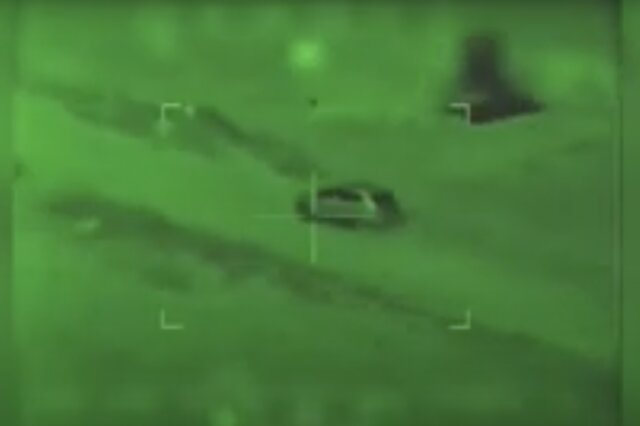The Hannibal Directive: New revelations shed light on deepening fractures within Zionist regime

Mojtaba Darabi, researcher and journalist
On the 7th of last October, Efrat Katz, reportedly held captive by Hamas during operation Al-Aqsa Flood, was killed—not by her captors, but by an Israeli helicopter strike. This action, taken to prevent her capture at any cost, was executed under the Hannibal Directive, a controversial Israeli military protocol. The Israeli Air Force commander confirmed the strike was per military orders, exposing a covert operational strategy intended to remain undisclosed.
A recent investigation by Haaretz has revealed that despite claims of its revocation in 2016, the Hannibal Directive was implemented on October 7, last year.
The newspaper’s report, published on Sunday and based on accounts from Zionist soldiers and high-ranking military officials, revealed that during the operation Al-Aqsa Flood by Hamas last October, the Israeli military issued an order stating that “not a single vehicle can return to Gaza.”
The Hannibal Directive stands alone in the annals of global military strategies. Rooted in the Ben-Gurion defense doctrine, this policy emerges from the Zionist regime’s strategic vulnerabilities, characterizing a regime constantly on edge.
Since its self-proclamation as a so-called state in 1948 under David Ben-Gurion, the regime has found itself on a collision course with regional countries due to its occupation of Palestinian lands.
Coupled with the limited strategic depth of the occupied territories and the demographic challenges posed by a population largely comprised of immigrants, the Zionist regime’s geopolitical situation compelled its founders to adopt drastic measures.
The Ben-Gurion doctrine is founded on three core principles: deterrence, early warning, and decisive offensive capability. These tenets laid the groundwork for extreme military protocols such as the Hannibal Directive. This policy was developed to mask the Zionist regime’s vulnerabilities and project an image of strength and impregnability.
However, in October 2023, the Al Aqsa Flood severely rattled the Ben-Gurion doctrine to its core, prompting the implementation of the Hannibal Directive, which was also used during the 2014 Gaza War. This decision aimed to prevent the capture of Zionist soldiers and settlers, but failed. Hamas resistance fighters succeeded in taking 250 Zionists captive.
The implementation of the Hannibal Directive has taken a toll not only on Zionist lives but also on the regime’s public trust and international reputation.
Recent disclosures about the directive’s application have introduced fresh challenges for the regime. These revelations could further erode public trust and intensify protests that are already calling for negotiations to release Zionist captives.
Such protests underscore a growing rift within the Israeli settler community, a division that deepens with each controversial military decision. Settlers increasingly perceive their leaders as disregarding their safety, contradicting official assurances of security.
Since the directive was implemented 275 days ago, deeper fractures within the Zionist regime have emerged, underscoring escalating challenges. As the regime continues these practices, both internal and external pressures mount, raising questions on the morality of such military measures.
David Ben-Gurion, a founding father of the Zionist regime, stressed the paramount importance of security in the face of existential threats, and his doctrine has been a bedrock of the regime’s military strategy for decades.
Inspired by the Ben-Gurion doctrine, Prime Minister Netanyahu has sought to bolster the Zionist regime’s security over decades, and cultivate an image of himself as “Mr. Security.”
Yet, Operation Al-Aqsa Flood marked a significant setback for the Ben-Gurion doctrine and the foundations of Israel’s security posture.
With the help from the US, the Zionist regime embarked on a brutal campaign aimed at dismantling Hamas and rescuing Israeli captives, but resulted in the tragic loss of over 38,000 lives and sparked global protests, including significant demonstrations in the United States, Israel’s principal ally.
The international outcry extended to American universities, resulting in an extraordinary crackdown with over 3,100 students arrested, reflecting growing awareness and opposition to the US-Israeli genocide in Gaza.
Furthermore, the recent disclosures about the Hannibal Directive have laid bare the vulnerabilities that the Zionist regime has long attempted to hide.
By implementing brutal measures like this directive, the regime has tried to project an image of invulnerability, demonstrating a resolve that its settlers and soldiers are beyond capture.
However, the spotlight is now firmly on the regime’s inhumane tactics, and its attempts to mask its foundational weaknesses are unraveling.
Despite significant efforts by the Zionist regime and its supporter, the US, the failures of the genocide in Gaza, intended to rehabilitate its tarnished reputation, have become unmistakably clear.
As the Leader of the Islamic Revolution, Imam Khamenei, highlighted during his January 9, 2024, address to people from Qom Province, the signs of defeat and failure of the Zionist regime are evident.
“They said that we will destroy Hamas and the Resistance and displace the people of Gaza. But they failed to do that, and today the Resistance remains strong, vigorous, and fully prepared, while the Zionist regime is exhausted, humiliated, and filled with regret. The true nature of the Zionist regime has been exposed,” he noted.
(The views expressed in this article are author’s own and do not necessarily reflect those of Khamenei.ir.)
| © | KHAMENEI.IR |


